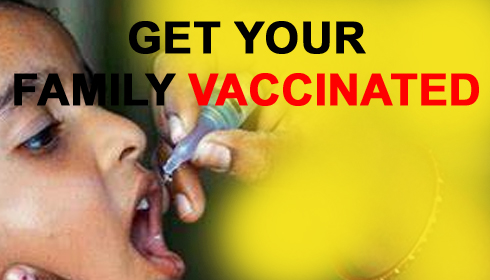
US: Dramatic Decline in Childhood Vaccination Rates Raise Concerns
According to a new review of data from the National Immunisation Survey-Child (NIS-Child), childhood vaccination rates in the United States have declined dramatically among children born in 2020 and 2021 compared to those born in 2018 and 2019. This drop, ranging from 1.3 to 7.8 percentage points, illustrates the possible long-term effects on public health, with essential vaccines such as influenza, diphtheria, tetanus, and acellular pertussis (DTaP) experiencing the highest drops. These findings, published in the Morbidity and Mortality Weekly Report (MMWR) by Hill HA, Yankey D, and Elam-Evans LD, highlight the importance of taking early action to address this trend.
While immunisation rates for certain vaccines, including poliovirus and measles, mumps, and rubella (MMR), have stayed over 90%, the survey found considerable variations based on race, ethnicity, health insurance status, socioeconomic level, and region. For example, non-Hispanic Black, Hispanic, and American Indian or Alaska Native children had persistently lower vaccination rates than non-Hispanic White children. Furthermore, children covered by Medicaid or other non-private health insurance plans, as well as uninsured children, had lower immunisation rates across major vaccine categories.
Influenza vaccines saw the largest drop in coverage. For infants born in 2020, coverage for two doses of the influenza vaccine fell by 7.8 percentage points, from 63.8% in the 2019 birth cohort to 53.4% in 2021. Growing vaccine hesitancy, particularly with influenza and COVID-19 vaccinations, could be the reason for the significant decrease in influenza vaccination rates. This hesitation may be contributing to reduced immunisation rates and gaps in child protection against preventable diseases.
The survey finds major variations in immunisation coverage across racial and ethnic groups. For example, non-Hispanic Black, Hispanic, and American Indian/Alaska Native children had considerably lower coverage with four doses of DTaP, four doses of pneumococcal conjugate vaccine (PCV), rotavirus vaccine, and the combined seven-vaccine series than non-Hispanic White children.
Socioeconomic status similarly influenced vaccination coverage. Children from households living below the federal poverty line were less likely to be fully immunised than those from more prosperous homes. The difference in immunisation rates varied from 2.7 percentage points for the MMR vaccine to an incredible 19.9 percentage points for the influenza vaccine.
Geography exacerbated these inequities. Children in rural areas have lower immunisation rates than their urban counterparts, especially for the influenza vaccine. Mississippi had influenza vaccination rates as low as 25.6%, whereas Rhode Island had far higher rates of 80.3%.
The COVID-19 epidemic disrupted the period between 2020 and 2021, leading to a decline in childhood immunization rates. Many youngsters missed routine healthcare visits, including vaccines, since the pandemic put a strain on the healthcare system. According to studies, the pandemic had a significant influence on routine paediatric care, including immunisations, aggravating existing inequities in healthcare access.
Despite these obstacles, coverage for some vaccines remained consistent, including the Hepatitis B birth dose and two doses of the Hepatitis A vaccine. The percentage of children who had not had any vaccines by the age of 24 months remained low, at only 1.2%, demonstrating that, despite declining coverage, the majority of children received some sort of immunisation.
Public health specialists stress the necessity of addressing these inequities and reversing the drop in immunisation rates. "Providers should review children's vaccination histories at every clinical encounter and recommend necessary vaccinations," according to the study. To boost vaccination coverage, strategies include resolving financial barriers, enhancing vaccine access, countering vaccine reluctance, and giving factual information to counter vaccine disinformation.
Research has demonstrated that interventions such as standing orders, reminder and recall systems, and strong medical recommendations can enhance immunization rates. Furthermore, the use of immunisation information systems can help identify low-coverage areas, allowing for targeted efforts to increase immunisation rates and reduce inequities.
As healthcare practitioners continue to deal with the problems posed by the COVID-19 pandemic, it is critical to establish methods that guarantee children receive all recommended immunisations on time. Addressing vaccine hesitancy, particularly for the influenza and COVID-19 vaccines, will be critical to increasing immunisation rates and protecting children from preventable diseases.
With the Healthy People 2030 goals for children's vaccine coverage remaining unmet, the NIS-Child survey results serve as a call to action for healthcare professionals, politicians, and communities to collaborate to close the immunization gap and protect public health.